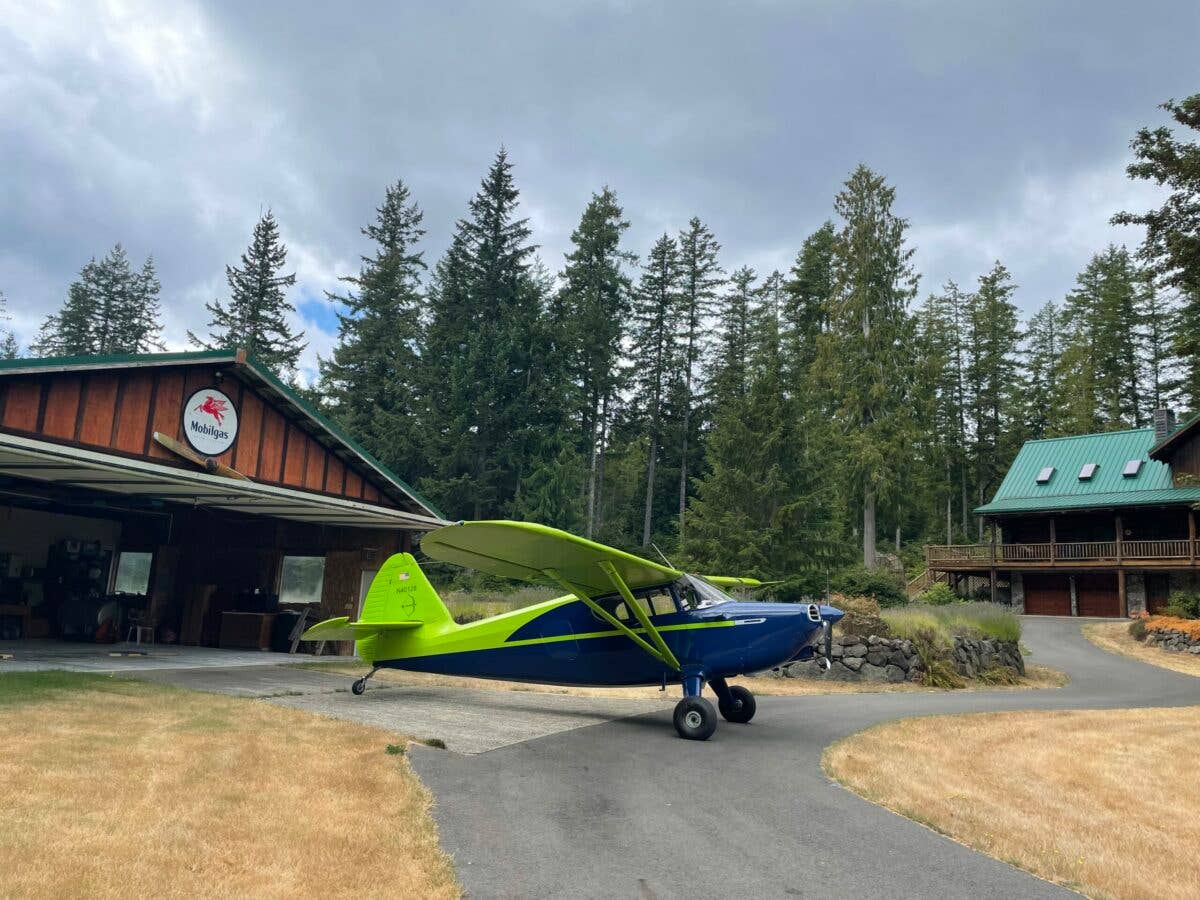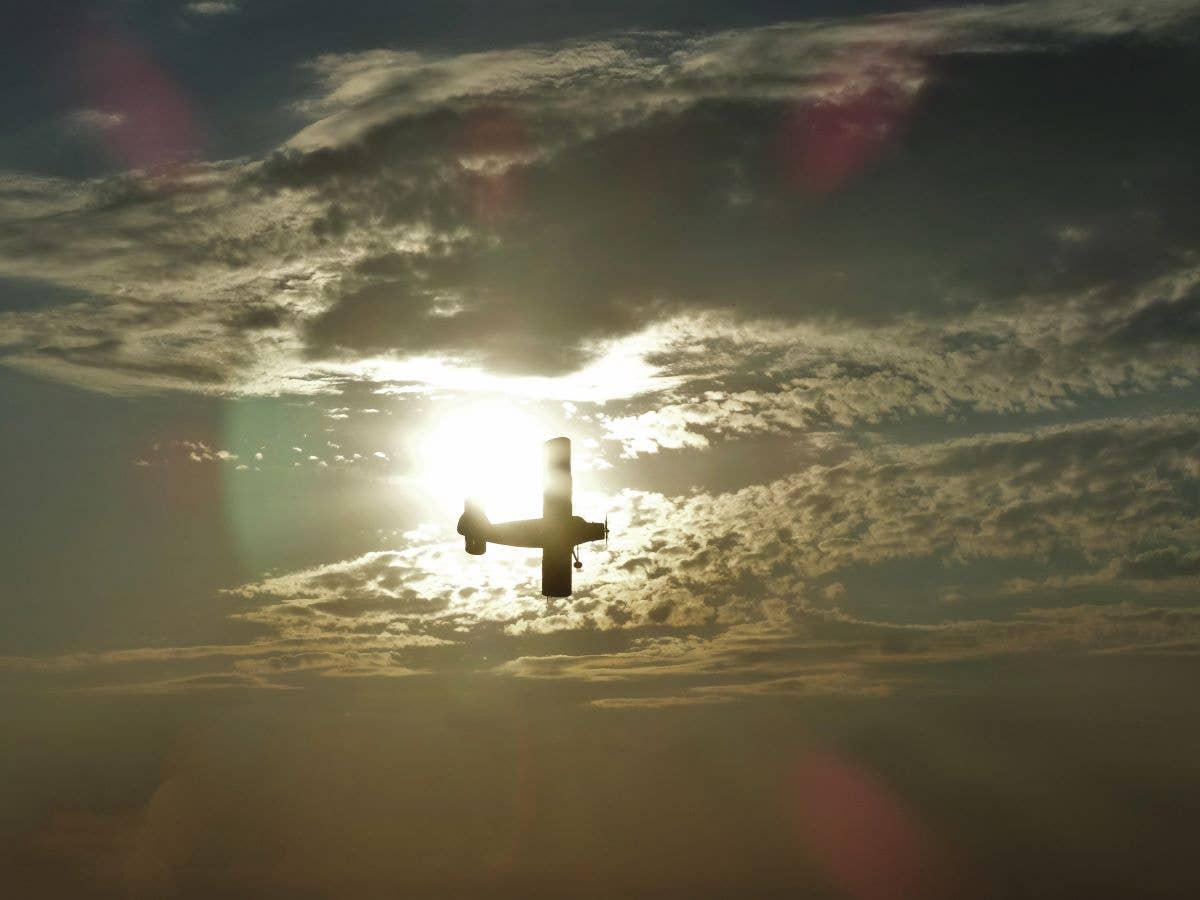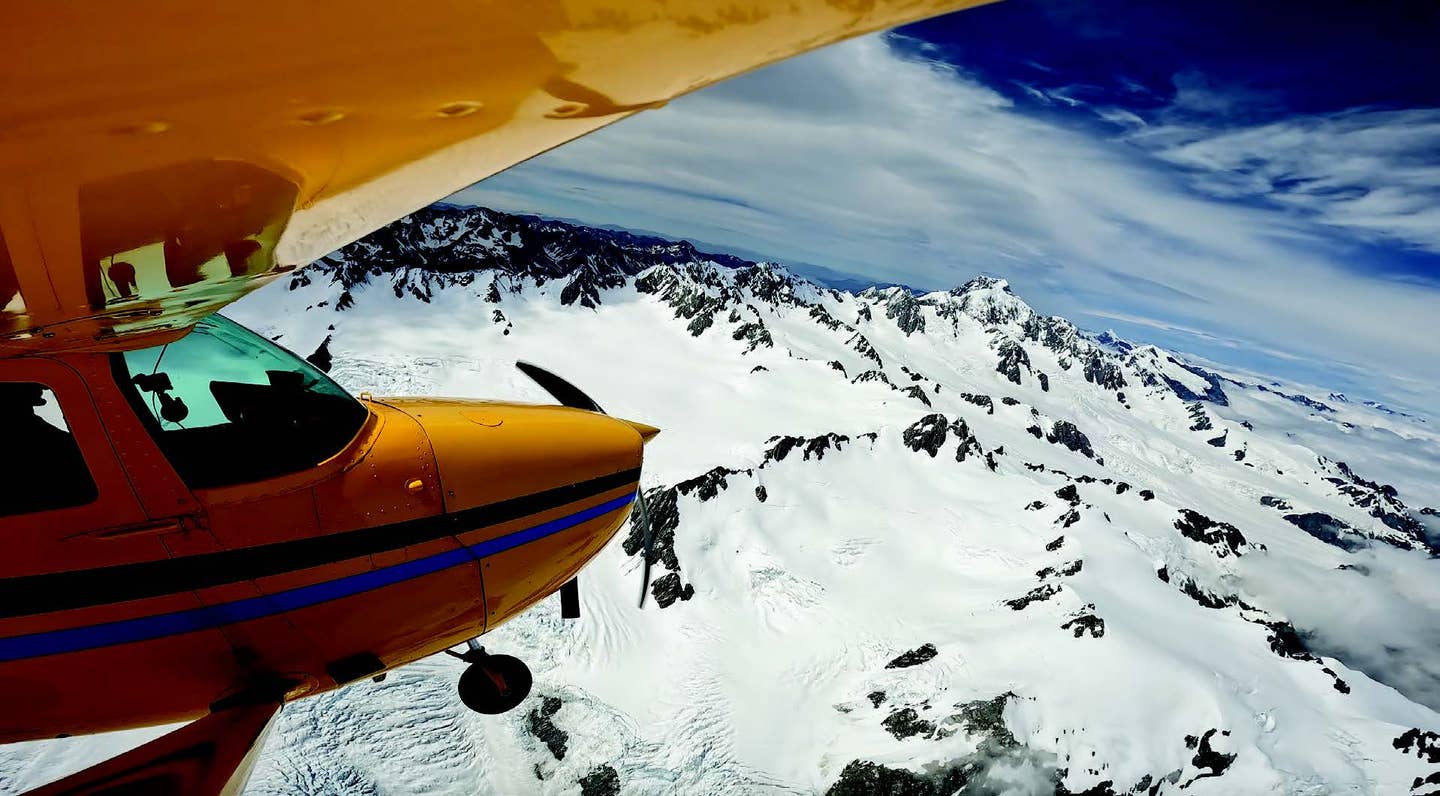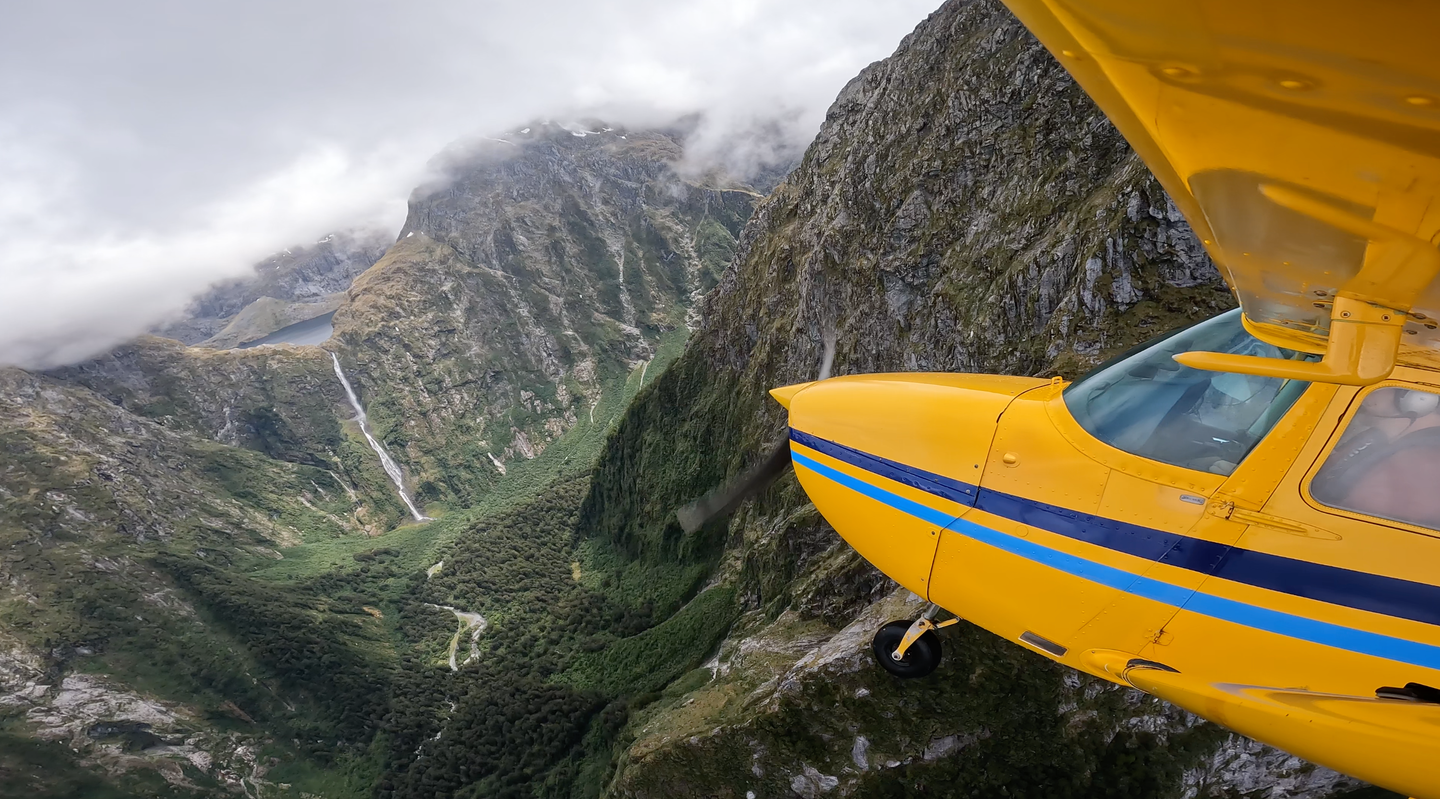When the Best Aircraft Plans Go Awry
A pilot had dreams of buying a Cessna 195. That is, until he laid eyes on a blue and green 1946 Stinson 108.

[Courtesy: Sam Weigel]
By nature and nurture, I am not a risk-taker, nor am I innately prone to impulsive action, which are two reasons I survived my misbegotten teen years and early 20s as a fledgling professional pilot. And yet, in the years since, friendships and happenstance and wanderlust aligned to turn me into a dirt-biking, skydiving thrillseeker who made a literal overnight decision to sell everything, buy a sailboat, and run away to sea (enabled, by my wife's rare and timely foray into shocking irresponsibility). Over time, I’ve found that my impulsive, risk-taking side has given me many of the best experiences—and friends—of my life.
I’ve lusted after the Cessna 195 ever since I first saw one at the tender age of 17, at Oshkosh in 1998. As my flying career developed, I assumed that I would eventually be able to afford one, and sensibly figured that owning one or two less-intimidating airplanes would prepare me to take on the care and feeding of 3,300 pounds of cabin-class vintage taildragger and a 300 hp Jacobs radial engine. The squirrely Piper Pacer that we owned from 2014 to 2016 gave me confidence that I could keep a 195’s shiny end pointed forward. Dawn and I talked about it over the last couple years, joined the type club, befriended some owners, and emerged from Oshkosh this year deciding that a Cessna 195 purchase within the next year was doable. All very sensible, very responsible.
If you're not already a subscriber, what are you waiting for? Subscribe today to get the issue as soon as it is released in either Print or Digital formats.
Subscribe NowAnd then I got home from OSH, walked in the door, dropped my bags, loaded barnstormers.com to see if any 195s had been posted in the 12 hours since I’d last checked—and was astonished to see my neighbor Kyle Williams’ blue-and-green 1946 Stinson 108 on the first page.
I knew Kyle had just finished a multiyear restoration—his second Stinson 108 rebuild—and I’d seen the airplane from afar during ground runs. I had talked to him shortly after the first flight, but I had no idea he was putting it on the market so soon. And anyways, the ad had an obvious typo: the price tag was only $35,000, which is on the lowside for an average Stinson 108 in this market, much less for a newly restored one. So I called Kyle to warn him before he was inundated with interest from flying cheapskates like myself!
No typo, said Kyle; the price is the price. He had built the Stinson for his wife, Vicki (their daily driver is a Cessna 185). She had changed her mind, and now he wanted the hangar space for his next project, a Bell 47 (H-13) helicopter with Korean War history. Now, I don’t have a hangar yet, but this seemed like a minor obstacle. I jumped on my motorcycle and headed up to the airpark for a closer look.
Stinson N40128 is an original “straight 108,” the 58th to roll off the production line. It was a “barn find” that hadn’t flown since 1966 with less than 1,200 hours total time. Kyle took it down to the bare frame and rebuilt it from the ground up with new paint and fabric, interior, glass, panel, and avionics, including ADS-B. The original 150 hp Franklin engine was junk, but Kyle procured a newly overhauled replacement from a reputable shop. Vicki picked the colors, and though I’m not a Seahawks fan, I have to admit it’s a striking and even attractive paint scheme.
I went up with Kyle, my first flight in a Stinson 108, and I was thoroughly impressed by the lovely handling qualities, both in flight and on landing. The airplane is nicely coupled and, while it has all the adverse yaw typical of the era, the rudder is fairly sensitive and only requires judicious nudges to stay coordinated. The hydraulically dampened landing gear absolutely soaks up jolts, and the long wheelbase and large vertical stabilizer make the 108 rather directionally stable for a taildragger. Like my Pacer, this airplane has 8.50 tires, which help on rough fields and give it a nice stance. The new interior is comfortable, but given the 108’s reputation for roominess, I was surprised to find the front seats a bit cramped, essentially on par with the Pacer. The easily removable rear seat, on the other hand, has a good bit of space, as does the cargo area, which is accessed via an optional baggage door (standard on the 108-1). There is a perfect amount of room for us, our pup, and a weekend’s worth of tent camping equipment.
This handling and roominess comes at the expense of performance, which is a bit anemic for my taste. The 108 cruises at a stately 100 mph with the big tires, slower than both the 145 hp Cessna 170 (110 mph) and our lighter and more compact 160 hp Pacer (120 mph). The Franklin is a bit thirstier than equivalent Lycomings and Continentals, which conspires with the slow cruise and 36 gallons of usable fuel to limit range to 300 sm with one-hour reserve. Short-field performance is decent, thanks to the generous wing area (with slots to retain aileron effectiveness in a stall) and effective flaps. That said, the rate of climb is pretty underwhelming, especially as you get close to max gross weight, which limits its utility in backcountry applications.
Kyle restored this airplane to original specs, and it could use some modern upgrades: shoulder harnesses for the front seats, a spin-on oil filter, and an attitude indicator. I like the panel’s simplicity and have no intention of taking this airplane IFR, but dark nights and inadvertent IMC happen. Replacing the single turn-and-bank indicator with a solid-state attitude indicator would also allow us to get rid of the venturi tubes and reclaim a knot or two of cruise speed.
My main concern was the powerplant, as newly overhauled engines are almost as suspect as high-time ones, and Franklins are orphaned engines last manufactured in 1949, with a limited supply of spare parts. The Franklin engine was the main reason we went with a Pacer over a Stinson the last time around, and given my experience with engines on the Pacer and our sailboat, I ought to be more gun-shy. But I’ve since met a number of Stinson owners who swear by the Franklin, and this one sure runs beautifully, with an alluring six-cylinder rumble at idle and lovely smoothness in cruise.
So, suddenly and unexpectedly, we had a choice to make: stick to the plan, wait until our hangar is done, and find and finance our dream 195 next summer; or jump now on a good cash deal on a newly restored and perfectly usable airplane, pushing the 195 back a year or two? The Stinson is admittedly not ideal for all the cross-country adventures we have in mind. It’ll be perfectly at home on our 2,400-foot grass airstrip, though, and will be a good platform for exploring the Pacific Northwest at a very reasonable cost. And when we do decide to move up to a 195, I have confidence that I can find the Stinson’s next caretaker without losing my shirt on the transaction, even if the used aircraft market returns to earth.
Dawn and I have a general policy of sleeping on all big decisions and large purchases, and we did on this one. The next day, we talked it through and Dawn gave her blessing. I found temporary space in another neighbor’s hangar, and I called Kyle to let him know that we’ve decided to adopt his beautiful Seahawks Stinson. Six years and four months after selling our beloved Pacer, we are the proud owners of another classic airplane of our very own. Adventure is sure to follow.
This article was originally published in the December 2022/January 2023 Issue 933 of FLYING.

Subscribe to Our Newsletter
Get the latest FLYING stories delivered directly to your inbox







